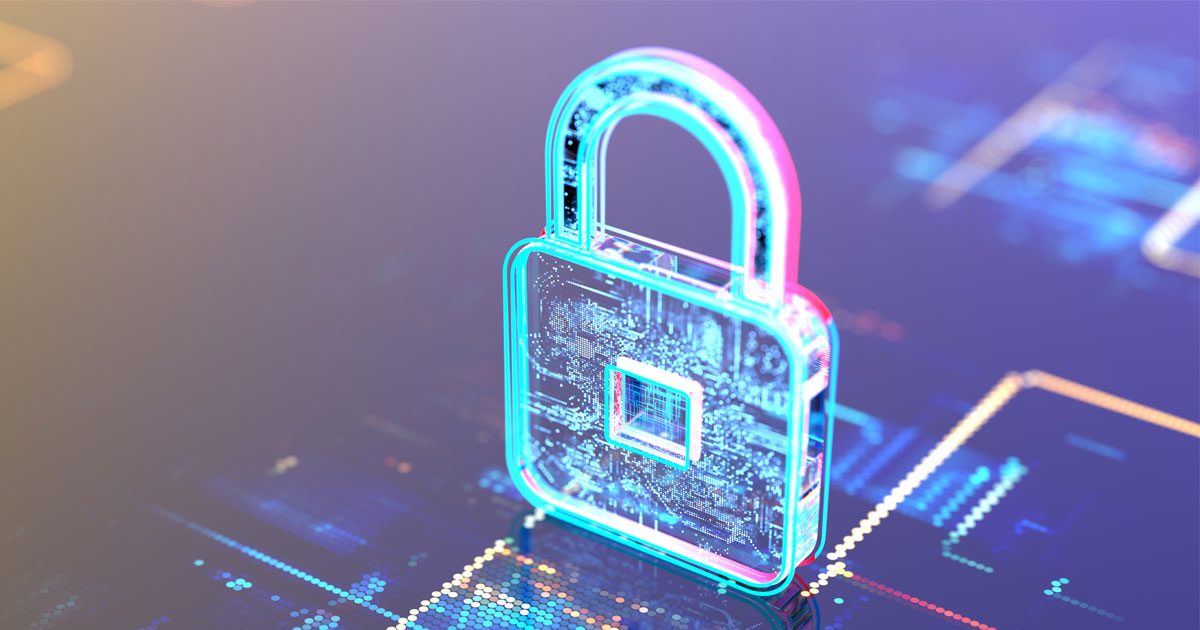Table of Contents
ToggleAs healthcare startups continue to emerge, there is an increasing need to pay attention to cybersecurity. It is a critical aspect of any organization’s operations, especially in the healthcare industry.
According to the Verizon 2020 Data Breach Investigations Report, 46% of all data breaches impact small businesses with fewer than 1,000 employees. This is due to the fact that small businesses often have limited resources to invest in cybersecurity measures, making them more vulnerable to attacks.
The National Cyber Security Alliance says that 60% of small businesses that experience a cyber attack go out of business within six months. This means that they are more vulnerable to cybersecurity attacks, which can have serious consequences for the business.
The average cost of managing a healthcare data breach rose to an average of $9.42 million in 2021 (HIPAA Journal, 2021).
The cost of a breach in the healthcare industry went up 42% since 2020. For the 12th year in a row, healthcare had the highest average data breach cost of any industry. $10.10 million is the average total cost of a breach in the healthcare industry (IBM data breach report 2022).
Organizations further along in a cloud modernization plan were able to detect and respond to breaches an average of 77 days faster. (IBM, 2021).
The cost of a breached record in healthcare was higher than in other industries from 2010 to 2019 — $429 per record in healthcare vs. $150 per record overall (Seh et al., 2020).
Why Are Startups More Vulnerable?
Startups are particularly vulnerable to cybersecurity threats because they have limited resources to invest in cybersecurity measures. This makes them attractive targets for cybercriminals. Cybersecurity threats can have serious consequences for start-ups, including operational downtime, customer trust, and loss of customers. A data breach can lead to the loss of sensitive data, such as patient records, which can have a severe impact on a healthcare start-up’s reputation. Furthermore, cyber-attacks can also have a long-term impact on a healthcare organization’s ability to provide quality care. For instance, if an organization’s reputation is damaged due to a cyber-attack, it could lead to reduced revenue. This could make it difficult for the organization to invest in new technologies and medical equipment, leading to further delays and longer waiting times for patients.
Unique Cybersecurity Concerns for Healthcare Start-up Businesses

There are various types of cybersecurity threats that can affect the healthcare industry, including:
- Malware- This refers to software or files that have malicious intent and can infect a computer or device without the user’s knowledge or consent. Malware can steal credentials, corrupt files, or even demand a ransom. In healthcare, this can disrupt patient care and operations.
- Phishing- This is usually done through email and involves tricking the recipient into completing a task, such as transferring money or downloading malware.
- Data exposure- Data breaches can also occur from unintentional sources like lost laptops or accidental disclosures from employees.
- Insider threats- Employees can pose a threat to the organization, whether intentionally or unintentionally. This includes selling credentials or falling for phishing scams.
- Whaling- This is an advanced phishing scam that targets high-level employees and involves significant research on the victim and impersonated person.
- System vulnerabilities- It’s important to install software updates and patches to prevent hackers from exploiting vulnerabilities in the network.
Healthcare start-ups face unique cybersecurity concerns due to the sensitive nature of the data they handle. Healthcare data is highly valuable because it contains personal and sensitive information. Patient records contain information such as medical histories, social security numbers, and credit card information.
Healthcare start-ups must also comply with strict regulations, such as the Health Insurance Portability and Accountability Act (HIPAA). Failure to comply with these regulations can result in severe penalties and legal consequences. Medical records, treatment plans, and patient data are all stored electronically, and hospitals and clinics rely on networked systems for everything from patient monitoring to medication administration. When a healthcare organization suffers a cyber security attack, it can lead to a range of serious consequences that go beyond just the theft or exposure of patient data. For example, a ransomware attack that locks down critical systems can prevent healthcare providers from accessing medical records or even controlling medical devices, which can delay procedures and tests, as well as extend patient stays.
Healthcare start-ups also face unique cybersecurity challenges because they often rely on third-party vendors for their IT infrastructure. This is why it is essential for a healthcare MSP (Managed Service Provider) to have a good relationship with their 3rd party vendors. The relationship between MSPs and 3rd party vendors is critical to the success of both parties and the security of the end client. This is why MSPs should monitor their vendor’s security practices and policies to ensure that they are aligned with industry best practices and meet the MSP’s security standards.
Focus On A Cybersecurity-first Culture
Embedding a cybersecurity-first culture in healthcare start-ups is critical to protect sensitive data and prevent cybersecurity attacks. Employees are the most important factor when it comes to stopping cybersecurity threats at a healthcare startup because they are the ones who have access to sensitive information and systems. They are also the ones who can unintentionally or intentionally cause security breaches. It only takes one employee to open the wrong email and the whole system can be breached. So, one of the most important things that a startup can do is to educate employees about the importance of cybersecurity and how it impacts businesses. This includes conducting regular training sessions to ensure that employees understand the risks of cyber-attacks and how to protect themselves and the company.
Developing comprehensive cybersecurity policies and procedures is critical to maintaining a cybersecurity-first culture. These policies should cover everything from password management to network access and should be reviewed and updated on a regular basis. Implementing strong authentication methods, such as multi-factor authentication, can greatly reduce the risk of cyber-attacks. This can be done by requiring users to use two or more forms of authentication before granting access to sensitive data or systems.
Regularly assessing and monitoring the organization’s cybersecurity risks can help to identify potential vulnerabilities and threats. This includes conducting vulnerability scans, penetration testing, and other forms of security testing. It is essential to keep software and hardware up to date to ensure that the latest security patches and updates are applied. This includes updating operating systems, applications, and firmware on a regular basis.
Developing a Cyber Security Strategy for Your Healthcare Startup
Here are some ways to reinforce cyber security within your start up:
1. Develop a cybersecurity incident response plan that outlines the steps to take in the event of a security breach.
- Preparation: Develop a clear and detailed plan for how to respond to a security breach. This includes identifying key stakeholders and decision-makers, establishing communication channels, and outlining procedures for assessing and containing the breach.
- Identification: Train staff on how to identify and report security breaches. This includes clear reporting channels and protocols for escalating incidents.
- Containment: Isolate affected systems and devices to prevent further spread of the breach. This may involve shutting down certain systems, disabling accounts, or revoking access privileges.
- Analysis: Assess the scope and impact of the breach, including what systems and data may have been compromised. This may involve forensic analysis of systems and devices to identify the source and extent of the breach.
- Response: Implement a plan for responding to the breach, including notifying relevant stakeholders and authorities. This may involve working with law enforcement or regulatory agencies, as well as communicating with affected customers and employees.
- Recovery: Work to restore affected systems and devices, and implement measures to prevent similar incidents from occurring in the future. This may include patching vulnerabilities, strengthening access controls, and implementing enhanced monitoring and detection capabilities.
- Lessons learned: Conduct a post-incident review to identify areas for improvement and update the incident response plan accordingly. This may involve revising policies and procedures, providing additional training and resources for staff, and implementing new security controls and technologies.
2. Use security automation tools to help detect and respond to security threats in real-time. There are lots of great tools that can be used:
- Security Information and Event Management (SIEM) tools- SIEM tools collect and analyze security-related data from various sources in real-time to detect and respond to security threats. Examples of SIEM tools include Splunk, IBM QRadar, and LogRhythm.
- Intrusion Detection and Prevention Systems (IDPS)- IDPS tools monitor network traffic for signs of malicious activity and can automatically block or alert security teams to potential threats. Examples of IDPS tools include Snort, Suricata, and Bro.
- Security Orchestration, Automation, and Response (SOAR) platforms- SOAR platforms automate security processes and workflows to help security teams respond to security incidents faster and more efficiently. Examples of SOAR platforms include Demisto, Phantom, and Swimlane.
- Vulnerability Scanners- Vulnerability scanners scan networks and systems for vulnerabilities that could be exploited by attackers. Examples of vulnerability scanners include Nessus, OpenVAS, and Qualys.
- Endpoint Detection and Response (EDR) tools- EDR tools monitor endpoints (e.g., laptops, desktops, servers) for signs of malicious activity and can automatically respond to threats. Examples of EDR tools include Carbon Black, CrowdStrike, and Symantec Endpoint Protection.
3. Develop a cybersecurity policy – The policy should be regularly reviewed and updated to ensure it remains current and effective.
4. Provide cybersecurity training – All employees should receive regular cybersecurity training to raise awareness of cyber threats and how to prevent them. This can include training on password management, phishing scams, and how to handle sensitive data. Keep employees up to date on the latest threats and how to protect themselves and the company. Foster a culture of security awareness and encourage employees to report any potential security issues or concerns to management.
5. Conduct regular security audits – A cybersecurity audit is an assessment of an organization’s information technology (IT) systems and infrastructure to identify potential security risks and vulnerabilities. The goal of a cybersecurity audit is to evaluate the effectiveness of an organization’s cybersecurity controls, policies, and procedures, and to identify any weaknesses or gaps that may be exploited by cyber attackers. This can include penetration testing, vulnerability scanning, and risk assessments.
6. Use encryption and other security measures – Healthcare start-ups should use encryption and other security measures to protect sensitive data. This can include using firewalls, anti-virus software, and multi-factor authentication.
7. Hire a cybersecurity professional – Healthcare start-ups should consider hiring a cybersecurity professional to oversee their cybersecurity efforts. This can include a Chief Information Security Officer (CISO) or a cybersecurity consultant.
Cybersecurity is Your Healthcare Business Responsibility
Ensuring cybersecurity is not just a necessity but a responsibility for every healthcare startup. As we delve deeper into the digital age, it’s clear that the threats will continue to evolve and proliferate. However, with the right approach and commitment, startups can build robust defenses against these digital threats. Remember, cybersecurity is not a one-time task but an ongoing process. It requires constant vigilance and adaptation. Let’s make security a priority today, for a safer and healthier tomorrow.
Resources:
- HIPAA Journal. (2021, July 29). The Average Cost of a Healthcare Data Breach is Now $9.42 Million. HIPAA Journal. https://www.hipaajournal.com/average-cost-of-a-healthcare-data-breach-9-42-million-2021/
- IBM. (2021). Cost of a Data Breach Study. IBM. https://www.ibm.com/security/data-breach
- Seh, A. H., Zarour, M., Alenezi, M., Sarkar, A. K., Agrawal, A., Kumar, R., & Khan, R. A. (2020). Healthcare data breaches: Insights and implications. Healthcare, 8(2), 133. NCBI. https://doi.org/10.3390/healthcare8020133
- Verizon. (2018, April 13). 2019 Data Breach Investigations Report. Verizon Enterprise. https://enterprise.verizon.com/resources/reports/dbir/

With over 16 years in the industry, Jameson Lee has honed his skills in IT management, project execution, and strategic planning. His ability to align technology initiatives with business goals has consistently delivered remarkable results for organizations across various sectors.
Jameson’s educational background includes an Associate of Applied Science degree in Computer Networking Systems, providing him with a solid foundation in technical concepts and best practices. Complementing his technical acumen, he has also completed coursework in Business Administration, equipping him with a well-rounded understanding of the operational aspects of running successful businesses.
Driven by a commitment to staying ahead of industry trends, Jameson actively pursues professional certifications and continuous learning opportunities. His credentials include CompTIA A+, N+, and Security+, along with MCP and MCTS certifications. This dedication ensures that he remains at the forefront of technological advancements, enabling him to offer innovative solutions to complex challenges.
What sets Jameson apart is his personable approach to working with clients. He believes in fostering strong relationships and effective communication, collaborating closely with stakeholders to understand their unique needs, and provide tailored technology solutions. By building trust and understanding, Jameson ensures that every project is aligned with the client’s vision and objectives.
Throughout his career, Jameson has successfully led teams and implemented robust frameworks to optimize performance and achieve remarkable technological initiatives. Whether it’s streamlining operations, enhancing cybersecurity measures, or implementing cutting-edge software solutions, Jameson has consistently delivered tangible outcomes for his clients.
As a trusted IT partner, Jameson’s mission is to empower businesses with technology solutions that drive growth, efficiency, and competitive advantage. With his expertise, dedication, and personable approach, Jameson Lee is the catalyst for transforming your business through the power of technology.



